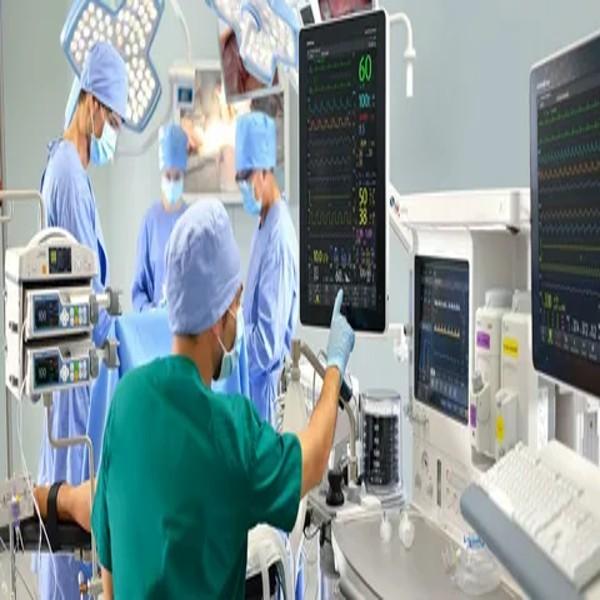Connected Medical Devices: Transforming Healthcare With Real-Time Patient Data

The Rise of Connected Health
As more medical devices become internet-enabled, connectivity is revolutionizing how healthcare is delivered. Connected devices allow for monitoring patients remotely and in real time, giving providers insights that were previously unavailable. They reduce the need for frequent in-person visits and streamline care coordination across settings. The amount of digital health data being generated is growing exponentially, providing opportunities for preventative care, more proactive management of chronic conditions, and improved outcomes.
Enabling Remote Patient Monitoring
Connected Medical Devices designed for remote patient monitoring let clinicians track important vital signs outside of clinical settings. Wearables and implantables that measure things like heart rate, blood pressure, blood sugar levels, breathing rate and more send data via Bluetooth or wifi to a patient's mobile device or secure online portal. Care teams can access these readings to spot any concerning changes or trends right away. This type of monitoring is especially useful for managing conditions that require frequent checks like heart failure or diabetes. It empowers patients and family caregivers while easing burdens on the healthcare system.
Advancing Chronic Disease Management
Digital solutions are changing how chronic illnesses are addressed. Devices paired with mobile apps support medication adherence, symptom tracking and education. They create closed-loop systems where changes in a patient's metrics automatically trigger notifications or treatment adjustments to keep their condition stabilized. Connected inhalers, EKGs, glucose monitors and other tools provide a wealth of real-world data that gives providers deeper insights to optimize treatments over time. Outcomes research shows remote monitoring can reduce hospital readmissions and ED visits for conditions like COPD and congestive heart failure by catching issues early.
Improving Post-Acute Care Transitions
When patients transition between care settings like the hospital and home, that period is high-risk for medical errors, gaps in care and readmissions. Connected medical devices facilitate communication and monitoring across care teams to ensure smooth handoffs. For example, hospital-discharged patients may have remote patient monitors or digital scales sent home with them. Automatic data uploads keep post-acute care providers abreast of the patient's status to spot any signs of deterioration and address problems before they escalate. Connectivity helps maintain oversight as people transition to lower levels of care.
Enhancing Surgical Recovery
New connected medical technologies are assisting with postoperative recovery. Smart sutures incorporate sensors to monitor wounds and identify any complications like infection or bleeding under the skin. Digitally-enabled joint replacements can transmit ambulation data to physical therapists for remote rehab visits to advance recovery. Medication dispensers paired with mobile apps help joint replacement patients and their families ensure proper dosage schedules are followed at home. These innovations enable earlier discharges with ongoing remote surveillance, reducing recovery times and costs.
Empowering Caregivers and Loved Ones
Digital tools also support family caregivers. Connected devices let non-clinicians help oversee loved ones' conditions and participate more fully in care planning. They provide caregivers their own portals to access treatment information, medication schedules and biometrics. Caregiver-facing apps and monitors display special instructions for assisting patients at home. When aging parents or family members live far away, connected solutions give caregivers reassurance and peace of mind through remote patient oversight. This helps caregivers maintain well-being and balance while assisting loved ones.
Data's Untapped Potential
While connectivity has enabled major benefits so far, healthcare has just begun tapping the potential of real-world data. Aggregated insights from medical devices, EHRs, genomics, and more could fuel advanced analytics to transform population health management, predictive modeling for at-risk individuals, and help clinicians target interventions more precisely.
Standards for interoperability will become increasingly important to fully leverage connected health data's potential for discovery and improving outcomes across entire communities. Healthcare stakeholders must thoughtfully address privacy, security and ethical frameworks as digital innovation accelerates. Still, connected medical devices represent a huge opportunity to enhance the entire healthcare experience for patients, providers and caregivers alike.
Get more insights on, Connected Medical Devices
Explore More Related Article On- Blood Glucose Test Strip Market
For Deeper Insights, Find the Report in the Language that You want.
About Author:
Priya Pandey is a dynamic and passionate editor with over three years of expertise in content editing and proofreading. Holding a bachelor's degree in biotechnology, Priya has a knack for making the content engaging. Her diverse portfolio includes editing documents across different industries, including food and beverages, information and technology, healthcare, chemical and materials, etc. Priya's meticulous attention to detail and commitment to excellence make her an invaluable asset in the world of content creation and refinement. (LinkedIn- https://www.linkedin.com/in/priya-pandey-8417a8173/)
- Art
- Causes
- Crafts
- Dance
- Drinks
- Film
- Fitness
- Food
- Spiele
- Gardening
- Health
- Startseite
- Literature
- Music
- Networking
- Andere
- Party
- Religion
- Shopping
- Sports
- Theater
- Wellness
- IT, Cloud, Software and Technology


